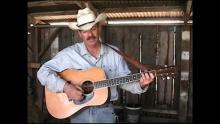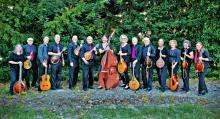

SCOTT GERBER
The “Singing Jewish Cowboy,” Scott comes from a secular left-wing Jewish agricultural community near Petaluma, where Yiddish culture and activism for social justice were very important. He has worked in agriculture all his life, mainly on cattle ranches. Sings country, folk and cowboy songs, but Yiddish “shtetl folksongs,” sung to him by his mother and grandmother, are closest to his heart. Accompanies himself on guitar and available for most any venue.
https://klezcalifornia.org/acadp_listings/gerber-scott/
https://www.bonnieburtproductions.com/song-of-a-jewish-cowboy
GRAVENSTEIN MANDOLIN ENSEMBLE
The Gravenstein Mandolin Ensemble (GME) was formed in 2006 in Sebastopol, California, the home of the famous Gravenstein apples. The Ensemble continues a long tradition of mandolin orchestras in America. In the late 19th and early 20th centuries, musical ensembles and community choirs provided a welcoming social and musical environment for many immigrant groups. In cities with large Jewish populations, like New York, Toronto, Detroit, Chicago, and others, there could be many musical groups playing music from “the old country” and singing traditional songs in Yiddish, Russian, Polish or other Eastern European languages. In New York, many Jewish and Italian immigrants belonged to the Workman’s Circle Mandolin Orchestra, and garment workers had a separate orchestra made up of members of the International Ladies Garment Workers Union. In Detroit, the Jewish Folk Chorus began nearly 100 years ago, and continues to the present day. In the 1960s, it provided a foundation and inspiration for an entirely new generation of folk musicians.
By the end of World War II, mandolin orchestras started to fade out, with assimiilation of so many immigrants into the mainstream of American culture. But thanks to the Folk Revival of the 1960s many younger musicians rediscovered the mandolin. With its strong presence in Bluegrass music, the mandolin attracted a whole new audience of musicians, many of them urban musicians, totally outside the sphere of traditional country music. At the same time, many mandolin orchestras began to regroup with younger players; they began with some of the music from the earlier era, and gradually evolved to serious groups playing new music composed specifically for mandolin orchestras.
The Gravenstein Mandolin Ensemble chooses its repertoire from some of the Jewish and Eastern European music that was played in the early orchestras. It also includes music from Italian and Brazilian traditions, and a fair amount of modern compositions for mandolin, such as Andy Statman’s popular “Flatbush Waltz,” a modern Klezmer tune. The Ensemble also plays the popular “Boston Ideal March,” a standard from 1902, composed by Jewish mandolin master, Samuel Seigel.
Gravenstein Mandolin Ensemble
Gus Garelick, Music Director
1st Mandolins: Bob Bayen, Gus Garelick, Ed Hance, David Lumpkin
2nd Mandolins: Leslie Norinsky, Rich Nosker, Gail Sharpsteen, Ella Smith, Chris Eccles
Mandolas: Dan Baron, Jan Kahdeman
Mandocellos: Rhonda Birney, Jan Hansen
Guitar: John Metras
Bass: Dorian Bartley
Save time - purchase and print out your daily parking pass from home.
